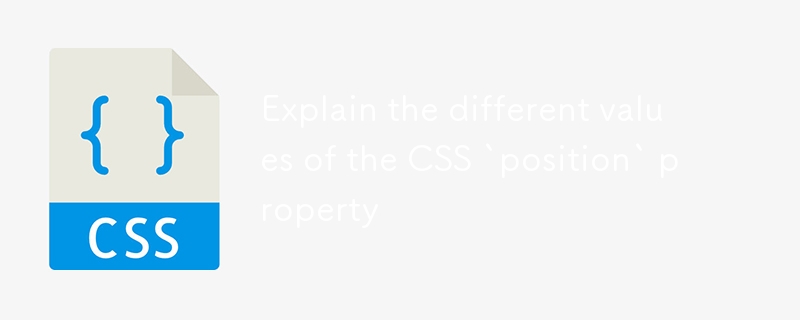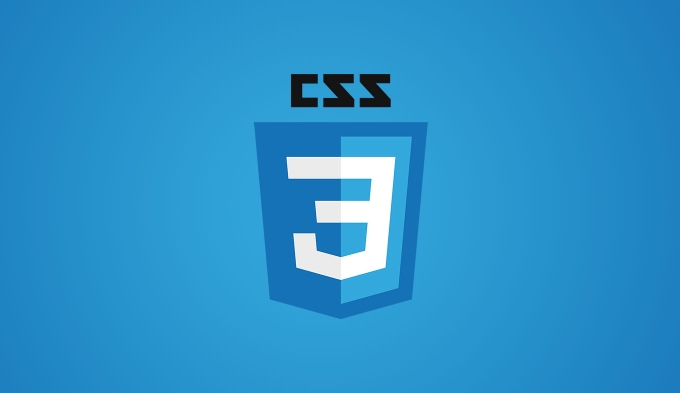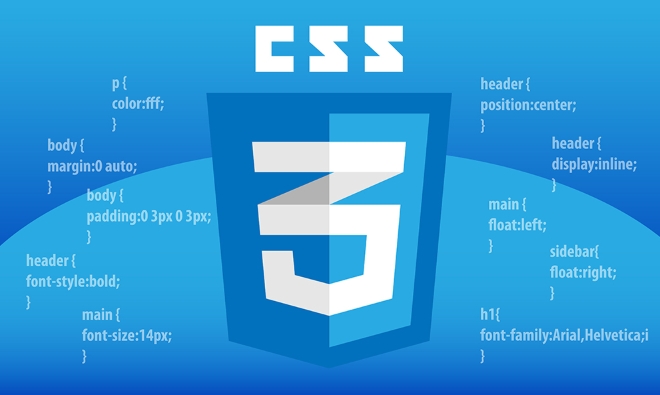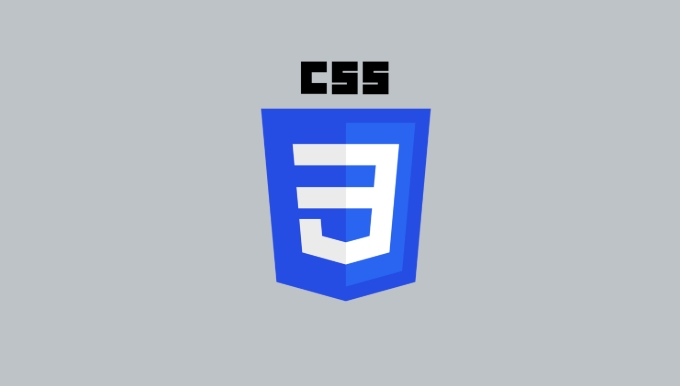Explain the different values of the CSS `position` property
Jul 19, 2025 am 02:22 AMThe CSS position attribute has five main values, which control how elements are positioned in the web page. 1. Static is the default behavior, and elements follow document flow and ignore attributes such as top and bottom; 2. Relative allows relative movement without leaving the document flow, retaining the original placeholder space; 3. absolute makes elements separate from document flow and position based on recent positioning ancestor elements; 4. fixed is similar to absolute but always based on browser window positioning, keeping the position unchanged when scrolling; 5. sticky is a blending mode, which appears to be relative before scrolling to a specific position, and then fixed to the viewport, suitable for sticky headers or sidebars.

The CSS position property controls how elements are positioned on a webpage. Understanding its different values is key to building layouts that behave the way you want. Here's what each value does and when to use it.

Static Positioning (Default Behavior)
This is the default for all elements. When you don't set the position property, or explicitly set it to static , the element follows the normal document flow.
- It ignores
top,bottom,left,right, andz-indexproperties. - You won't notice any special behavior with static positioning — it's just how elements normally appear.
Most of the time, you don't need to think about static unless you're resetting an element back to normal after using another position value.

Relative Positioning: Move Without Leaving the Flow
When you set position: relative , the element stays in the document flow, but you can shift it using top , bottom , left , or right .
- The space it originally occurred is preserved.
- Other elements around it act like it never moved.
- It can be layered with
z-index.
This is useful when you want to nudge an element slightly from where it would normally sit — like adjusting the placement of a label or icon without messing up the layout.

Example:
.box {
position: relative;
top: 10px;
left: 20px;
}This moves the box down and right by 10px and 20px respectively, but the original spot still takes up space.
Absolute Positioning: Take It Out of the Flow
With position: absolute , the element is removed from the normal document flow. It no longer affects other elements' positions.
- It's positioned relative to the nearest positioned ancestor (not static).
- If there isn't one, it goes all the way up to the viewport.
- You can place it exactly where you want using directional properties (
top,right, etc.).
This is handy for dropdown menus, toolstips, or overlays that need to break out of their container.
A few things to watch out for:
- If no parent has a non-static position, it might end up attached to the wrong reference point.
- Be careful stacking multiple absolutely positioned items —
z-indexbecomes important.
Fixed Positioning: Always Stays in View
position: fixed behaves similarly to absolute , but instead of being relative to a parent, it's always positioned relative to the browser window.
- Even if the page scrolls, the element stays in the same place on screen.
- Useful for navigation bars, floating buttons, or persistent UI elements.
For example, a "Back to Top" button that sticks to the bottom-right corner of the screen:
.button {
position: fixed;
bottom: 20px;
right: 20px;
}Just keep in mind that fixed positioning can sometimes interfere with mobile scrolling behaviors or cause layout issues if not handled carefully.
Sticky Positioning: A Hybrid That Reacts to Scroll
position: sticky is a mix between relative and fixed . It acts like a relatively positioned element until it reaches a certain scroll point — then it sticks.
- You must define at least one direction (
top,bottom, etc.) for it to work. - It remains in the document flow until it hits the defined threshold.
- Great for headers, sidebars, or anything that should stay visible during scrolling.
Common use case: a table header that sticks to the top while users scroll through rows.
Gotchas:
- Doesn't work inside containers with
overflow: hidden. - Parent elements shouldn't clip content, or the sticky effect won't trigger.
That's basically it. Each value serves a specific purpose and knowing when to use them make layout work a lot smoother.
The above is the detailed content of Explain the different values of the CSS `position` property. For more information, please follow other related articles on the PHP Chinese website!

Hot AI Tools

Undress AI Tool
Undress images for free

Undresser.AI Undress
AI-powered app for creating realistic nude photos

AI Clothes Remover
Online AI tool for removing clothes from photos.

Clothoff.io
AI clothes remover

Video Face Swap
Swap faces in any video effortlessly with our completely free AI face swap tool!

Hot Article

Hot Tools

Notepad++7.3.1
Easy-to-use and free code editor

SublimeText3 Chinese version
Chinese version, very easy to use

Zend Studio 13.0.1
Powerful PHP integrated development environment

Dreamweaver CS6
Visual web development tools

SublimeText3 Mac version
God-level code editing software (SublimeText3)

Hot Topics
 How to use PHP to build social sharing functions PHP sharing interface integration practice
Jul 25, 2025 pm 08:51 PM
How to use PHP to build social sharing functions PHP sharing interface integration practice
Jul 25, 2025 pm 08:51 PM
The core method of building social sharing functions in PHP is to dynamically generate sharing links that meet the requirements of each platform. 1. First get the current page or specified URL and article information; 2. Use urlencode to encode the parameters; 3. Splice and generate sharing links according to the protocols of each platform; 4. Display links on the front end for users to click and share; 5. Dynamically generate OG tags on the page to optimize sharing content display; 6. Be sure to escape user input to prevent XSS attacks. This method does not require complex authentication, has low maintenance costs, and is suitable for most content sharing needs.
 PHP creates a blog comment system to monetize PHP comment review and anti-brush strategy
Jul 25, 2025 pm 08:27 PM
PHP creates a blog comment system to monetize PHP comment review and anti-brush strategy
Jul 25, 2025 pm 08:27 PM
1. Maximizing the commercial value of the comment system requires combining native advertising precise delivery, user paid value-added services (such as uploading pictures, top-up comments), influence incentive mechanism based on comment quality, and compliance anonymous data insight monetization; 2. The audit strategy should adopt a combination of pre-audit dynamic keyword filtering and user reporting mechanisms, supplemented by comment quality rating to achieve content hierarchical exposure; 3. Anti-brushing requires the construction of multi-layer defense: reCAPTCHAv3 sensorless verification, Honeypot honeypot field recognition robot, IP and timestamp frequency limit prevents watering, and content pattern recognition marks suspicious comments, and continuously iterate to deal with attacks.
 What are common CSS browser inconsistencies?
Jul 26, 2025 am 07:04 AM
What are common CSS browser inconsistencies?
Jul 26, 2025 am 07:04 AM
Different browsers have differences in CSS parsing, resulting in inconsistent display effects, mainly including the default style difference, box model calculation method, Flexbox and Grid layout support level, and inconsistent behavior of certain CSS attributes. 1. The default style processing is inconsistent. The solution is to use CSSReset or Normalize.css to unify the initial style; 2. The box model calculation method of the old version of IE is different. It is recommended to use box-sizing:border-box in a unified manner; 3. Flexbox and Grid perform differently in edge cases or in old versions. More tests and use Autoprefixer; 4. Some CSS attribute behaviors are inconsistent. CanIuse must be consulted and downgraded.
 How to build a PHP Nginx environment with MacOS to configure the combination of Nginx and PHP services
Jul 25, 2025 pm 08:24 PM
How to build a PHP Nginx environment with MacOS to configure the combination of Nginx and PHP services
Jul 25, 2025 pm 08:24 PM
The core role of Homebrew in the construction of Mac environment is to simplify software installation and management. 1. Homebrew automatically handles dependencies and encapsulates complex compilation and installation processes into simple commands; 2. Provides a unified software package ecosystem to ensure the standardization of software installation location and configuration; 3. Integrates service management functions, and can easily start and stop services through brewservices; 4. Convenient software upgrade and maintenance, and improves system security and functionality.
 Describe the `vertical-align` property and its typical use cases
Jul 26, 2025 am 07:35 AM
Describe the `vertical-align` property and its typical use cases
Jul 26, 2025 am 07:35 AM
Thevertical-alignpropertyinCSSalignsinlineortable-cellelementsvertically.1.Itadjustselementslikeimagesorforminputswithintextlinesusingvalueslikebaseline,middle,super,andsub.2.Intablecells,itcontrolscontentalignmentwithtop,middle,orbottomvalues,oftenu
 What is the accent-color property?
Jul 26, 2025 am 09:25 AM
What is the accent-color property?
Jul 26, 2025 am 09:25 AM
accent-color is an attribute used in CSS to customize the highlight colors of form elements such as checkboxes, radio buttons and sliders; 1. It directly changes the default color of the selected state of the form control, such as changing the blue check mark of the checkbox to red; 2. Supported elements include input boxes of type="checkbox", type="radio" and type="range"; 3. Using accent-color can avoid complex custom styles and extra DOM structures, and maintain native accessibility; 4. It is generally supported by modern browsers, and old browsers need to be downgraded; 5. Set accent-col
 How to compile SCSS to CSS?
Jul 27, 2025 am 01:58 AM
How to compile SCSS to CSS?
Jul 27, 2025 am 01:58 AM
InstallDartSassvianpmafterinstallingNode.jsusingnpminstall-gsass.2.CompileSCSStoCSSusingthecommandsassinput.scssoutput.css.3.Usesass--watchinput.scssoutput.csstoauto-compileonsave.4.Watchentirefolderswithsass--watchscss:css.5.Usepartialswith_prefixfo
 How to change text color in CSS?
Jul 27, 2025 am 04:25 AM
How to change text color in CSS?
Jul 27, 2025 am 04:25 AM
To change the text color in CSS, you need to use the color attribute; 1. Use the color attribute to set the text foreground color, supporting color names (such as red), hexadecimal codes (such as #ff0000), RGB values (such as rgb(255,0,0)), HSL values (such as hsl(0,100%,50%)), and RGBA or HSLA with transparency (such as rgba(255,0,0,0.5)); 2. You can apply colors to any element containing text, such as h1 to h6 titles, paragraph p, link a (note the color settings of different states of a:link, a:visited, a:hover, a:active), buttons, div, span, etc.; 3. Most






